98% of potential leads remain anonymous website visitors.
Bear in mind that website visitors can qualify as leads.
So, without a website visitor tracking strategy, you’re letting leads slip through your fingers.
Why should you track website visitors?
Identifying who’s visiting your website, what company they represent, and where they are from can unlock multiple opportunities.
In short, identifying people who visit your website helps you increase conversions, nurture high-value leads, improve customer experience, and multiply your revenue.
Benefits of website visitor tracking
1. Targeted Sales
Instead of a scattershot approach, you can tailor your marketing and sales efforts to specific leads. Knowing a visitor’s company or browsing habits allows you to do multiple things, like prioritizing leads, personalizing website content, and running targeted ad campaigns.
2. Increase personalization
When visitors see content tailored to their needs, they’re more likely to engage and convert. Identifying them allows for things like personalized product recommendations, including items or services that complement their browsing behavior. Moreover, you can run retargeting campaigns and targeted email marketing with relevant promotional offers and valuable content for lead nurturing.
3. Improved customer service
Knowing a visitor’s past interactions with your site allows for a more personalized customer service experience. Identifying people who come to your website enables you to better address specific inquiries and respond directly to their needs and pain points. Moreover, you are better equipped to offer your potential leads proactive support by anticipating their questions and providing solutions before they arise. Lastly, you can build long-term customer loyalty by creating a positive experience that keeps them coming back for more.
4. Improved website experience
Understanding visitor behavior helps you optimize your website for conversions. By knowing what resonates with them, you can easily improve website navigation, optimize calls to action, and reduce bounce rates.
5. Not all website visitors are equal
By tracking companies visiting your site, you can target decision-makers with the buying power, uncover new sales opportunities, and nurture relationships before reaching out directly.
How does tracking your website traffic benefit your cold outreach?
There are several reasons why identifying website visitors is beneficial for cold outreach:
- Don’t waste time on unqualified leads and target your outreach
Instead of blindly contacting random companies, you can focus on the companies that have already shown interest in your product or service by visiting your website.
This allows you to tailor your outreach messages to their specific needs and interests, increasing the chances of a positive response.
- Increase engagement with a warm outreach approach
Since these visitors have already interacted with your brand, they’re warmer leads compared to completely cold contacts.
This means they’re more likely to be receptive to your outreach and engage in a conversation.
- Prioritize your outreach efforts
By identifying which companies visit your site most frequently or spend the most time on certain pages, you can prioritize your outreach efforts.
Leads who have simply visited your website once, may not be the most qualified leads. However, leads who frequently visit your website or turn to your resources when they need solutions are likely to be qualified leads.
Focus on the high-value leads who are more likely to convert into paying customers.
- Add high-level personalization to your messages
Knowing the companies visiting your website allows you to personalize your outreach messages.
You can mention specific pages they viewed or content they downloaded, demonstrating your awareness of their interests and building rapport, or address specific pain-points you know they may have based on the content they consume.
- Improve your sales efficiency
Targeted outreach is more efficient than generic cold calls.
You spend less time reaching out to irrelevant contacts and more time on qualified leads, increasing your sales team’s productivity.
- Align your inbound lead generation strategies
Identifying which companies visit your site can help you align your content marketing strategy with their needs.
Create content that addresses the challenges they face and showcases your expertise in solving their problems.
How does tracking your website visitors increase conversions?
Every person that comes to your site is a potential customer.
Imagine targeting the 98% of visitors who come, scroll your website, and leave without a trace.
You can make the most out of your lead generation tactics by identifying your website visitors and finding out the specific info about them.
Based on that info, you can make decisions on when to reach out directly to a specific website visitor, send them a newsletter, run a cold outreach campaign, or make a follow-up if they don’t respond.
In fact, you can tailor and personalize your lead targeting approach based on each visitor’s profile, which will help you close a deal.
What do you want to find out about people who visit your site?
- The exact profile of a company that browses your website, including industry, location, number of employees, and the names of employees plus email addresses.
- Typical pre-purchase and browsing behaviors allow you to better nurture new website visitors with the same browsing behaviors.
- Track the visitors that click your pay-per-click ads to see what they do on your site.
- Identify the page on which a lead converts or leaves your website without converting.
What to do when you identify your website traffic?
Knowing all the information above will allow you to focus on targeting high-value potential leads for increased conversions.
Here is a step-by-step plan of what you should do after you have tracked your traffic and identified the visitors:
→ Step 1: Identify your website visitors and add them to your sales funnel
→ Step 2: Sync them to your CRM to increase conversions
→ Step 3: Pass them to your sales teams for nurturing
→ Step 4: Add them to your targeted marketing campaigns
→ Step 5: Run them through a personalized cold outreach campaign
Target your website traffic with a smarketing strategy for higher conversions
Having a full 360-degree view of your website traffic after your identified people come to your website enables you to focus on quality leads that best fit your buyer persona.
That means that your sales and marketing can join forces and shift focus on the leads that are most likely to convert. Also known as smarketing, it’s an alignment of sales and marketing teams to work together.
According to statistics, when sales and marketing teams work closely together, businesses see a 27% faster profit growth thanks to more closed deals.
This is proven to be a very effective strategy to enhance the customer journey and increase sales.
Traditional website visitor tracking methods
Tracking your website visitors has been considered a successful lead generation strategy for a long time. Therefore there are sort of rudimentary techniques that are still useful today.
- Tracking website analytics
Although website analytics provide a high-level overview, they do not individual visitor details.
The biggest con is that despite knowing how many visitors come to your site, most of them remain anonymous.
- Sending email forms
Email forms are a common way to identify visitors, but they have very low conversion rates, usually below 3%.
Many visitors leave unidentified.
- Real-time engagement tools
These tools are also popular in site traffic identification, and they include live chat and chatbots.
However, to gain insight they require visitor interaction. It’s also considered a pushy tactic when acquiring information which may damage conversions.
- Data enrichment tools
This type of tool helps you acquire anonymous visitor data (cookies, IP addresses) and identifiable information (names, companies, contact details) by pulling info from various public and private sources.
While they are rather popular, their success is limited because many of them rely on outdated data, and knowing a visitor’s name and contact doesn’t guarantee conversion.
- 3rd party IP lookup service
This method can help you automatically track the origin or point of contact for the visitor’s IP address with Albacross or HappierLeads.
While they’re a good starting point, they have a few limitations, such as gathering inaccurate data which can lead you to target the wrong companies and limited insights and lack of details for personalized targeting.
Third-party IP lookup solutions can also be a costly investment with subscription fees or per-lookup charges that can add up rapidly.
As you can see, although traditional methods can still be effective, they don’t come without issues of their own.
However, there are other solutions.
5 best tools to track your website’s visitors
While we said it’s hard to find a tool that does it all, it’s not impossible.
There are many tools out there that can help you track your website visitors. These are just 5 of our favorites.
1. lemlist
Ratings ⭐️⭐️⭐️⭐️⭐️
G2 4.6/5 (261 reviews) \ Capterra 4.6/5 (382 reviews)
Overview
lemlist is a powerful solution with 450M+ B2B contacts and 63M companies, and advanced filtering that helps you to find your ICPs automatically and adds them to your cold outreach campaigns in seconds.
Now, lemlist has a brand new smart filter to target your website visitors that allows you to identify, enrich, and convert website visitors into buyers.
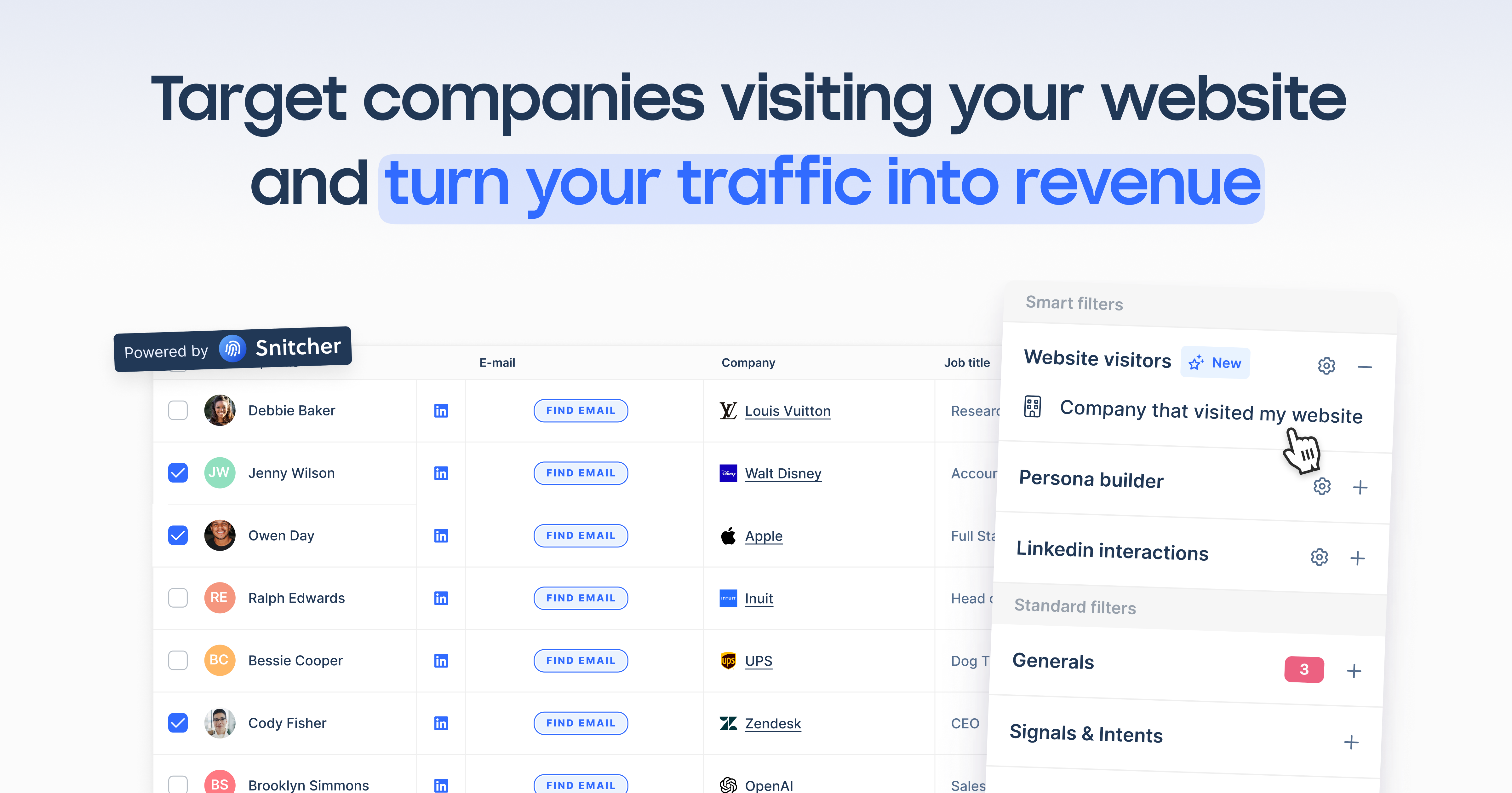
But how can you use this filter?
☑️ Step 1
Install website tracking script to enable the market’s most reliable provider, Snitcher, to identify companies that visit your website.
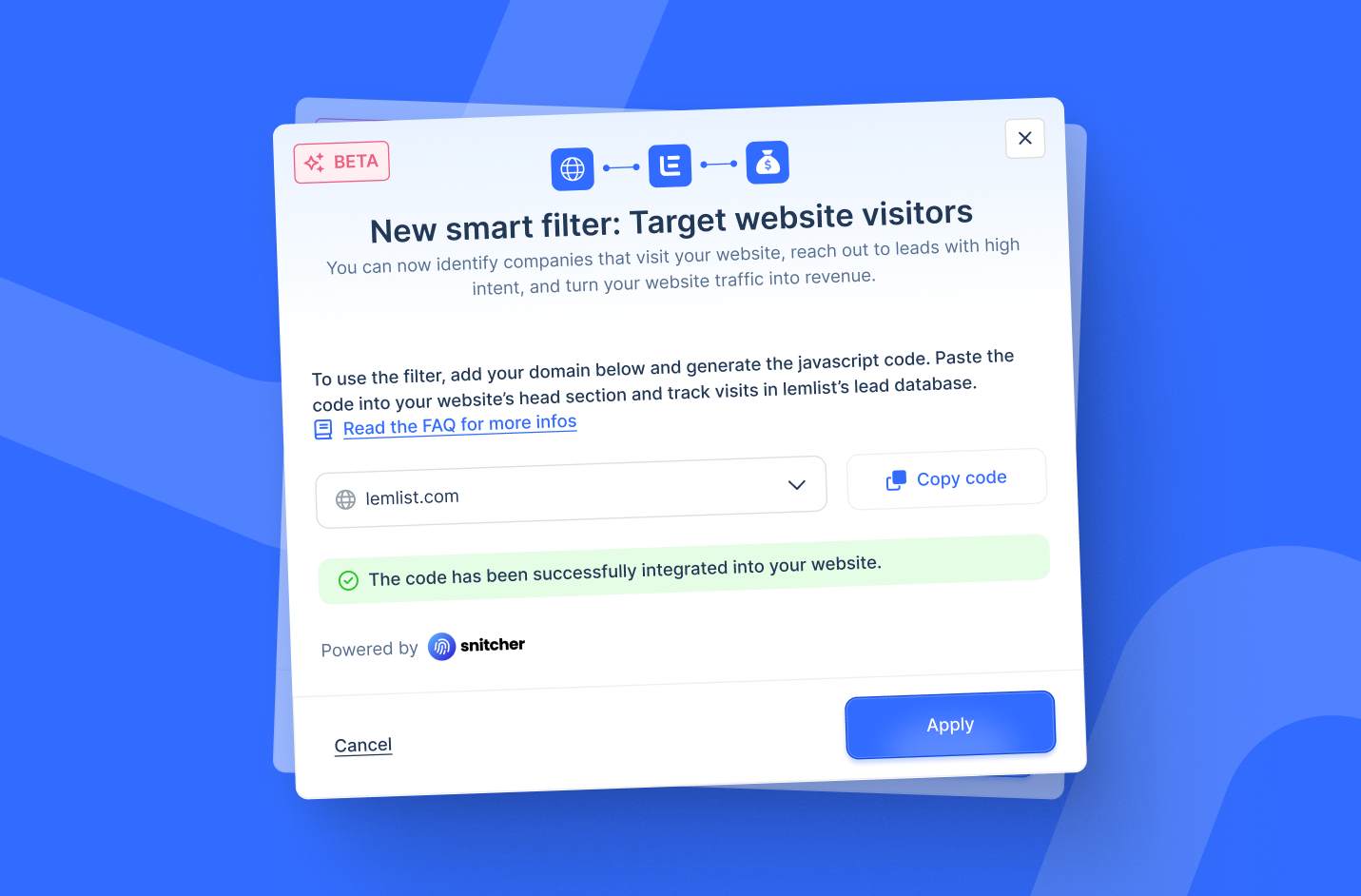
☑️ Step 2
Use the smart filter to get a list of all EU & US companies that visited your website directly in lemlist’s B2B lead database.
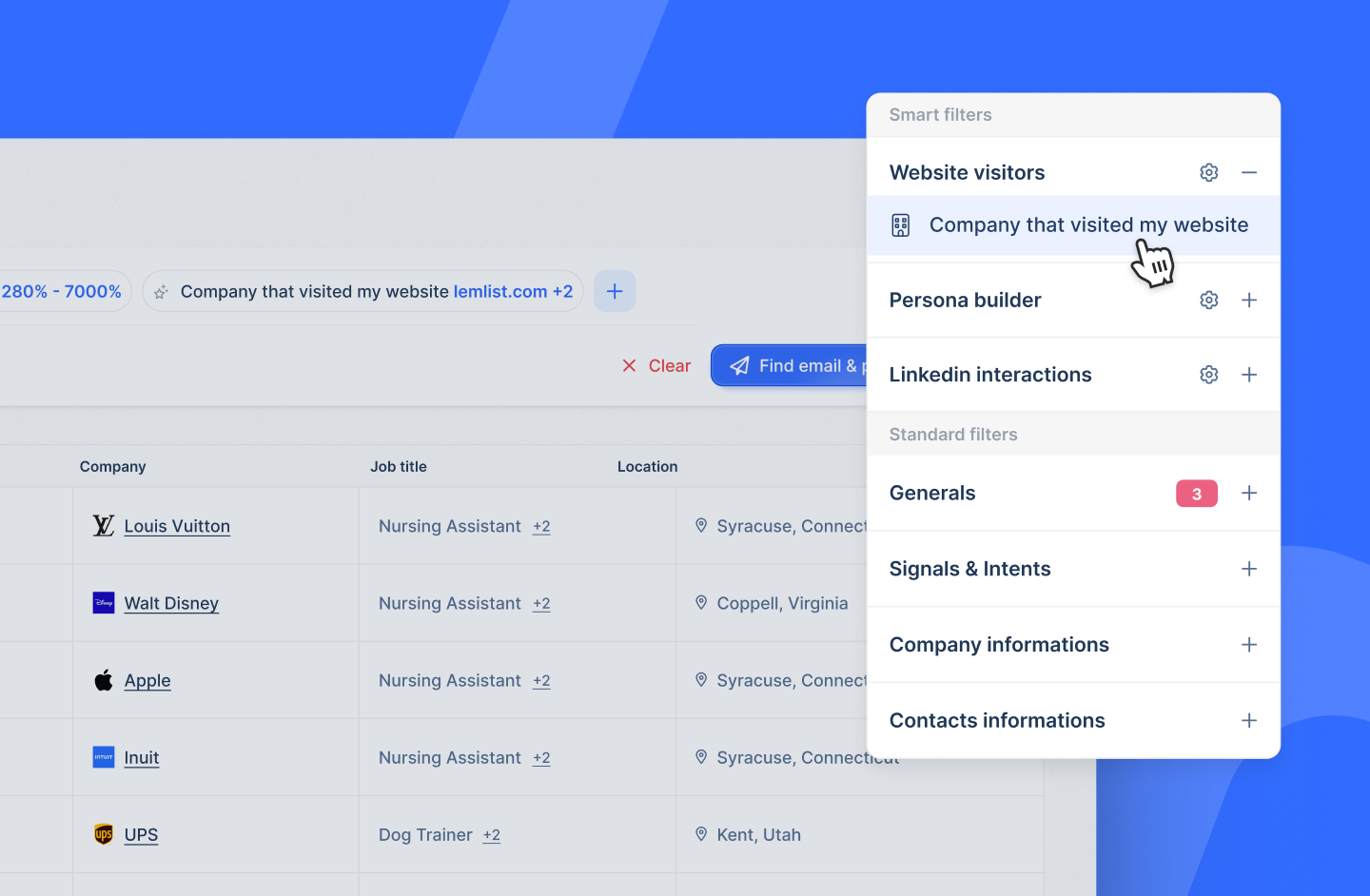
☑️ Step 3
Find relevant people from those companies to reach out to, including their verified emails and phone numbers, and other relevant details, such as company, job title, location, etc.
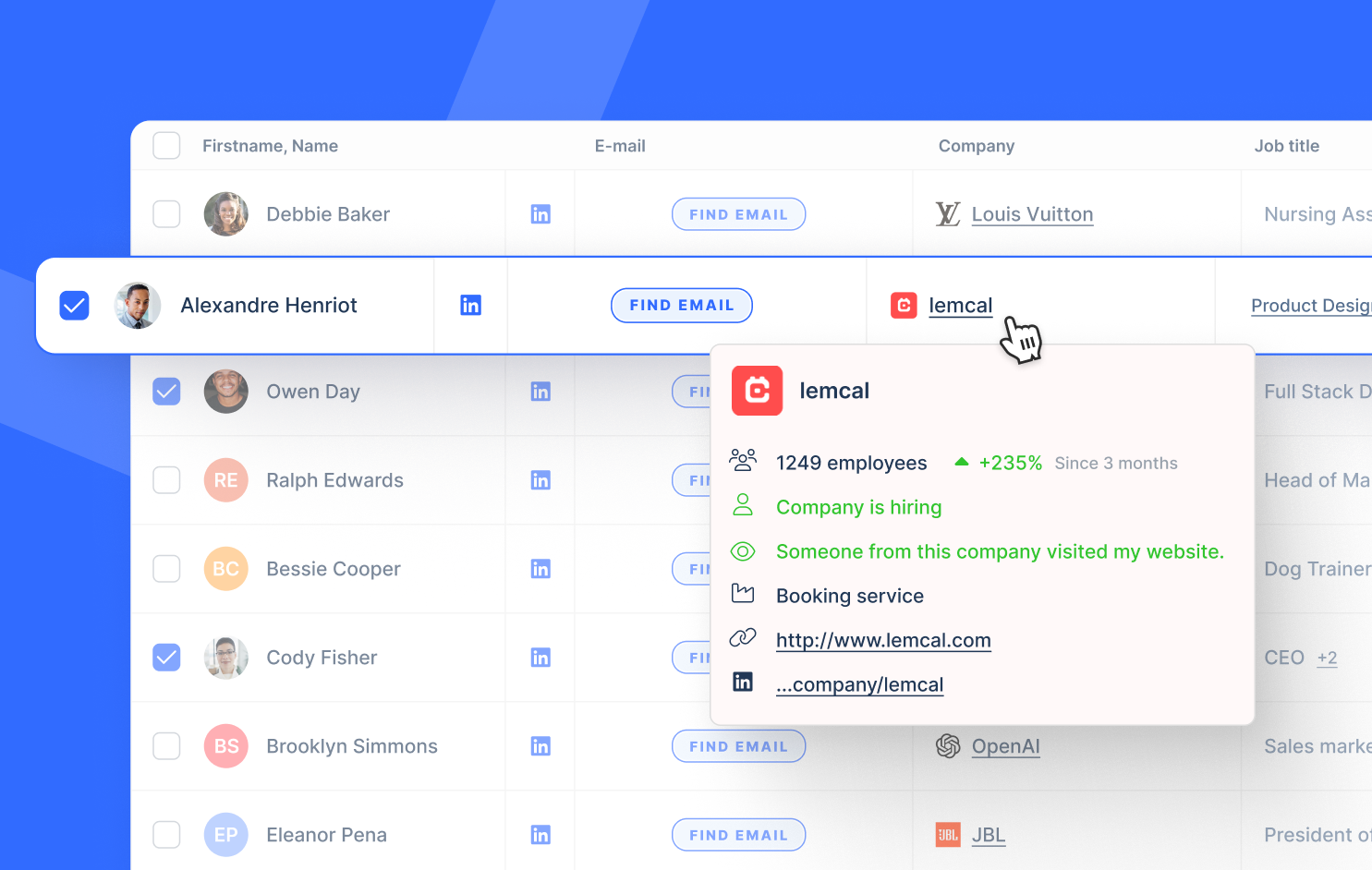
☑️ Step 4
Send leads directly to multichannel outreach campaigns that work on autopilot and engage at scale, in a human way.
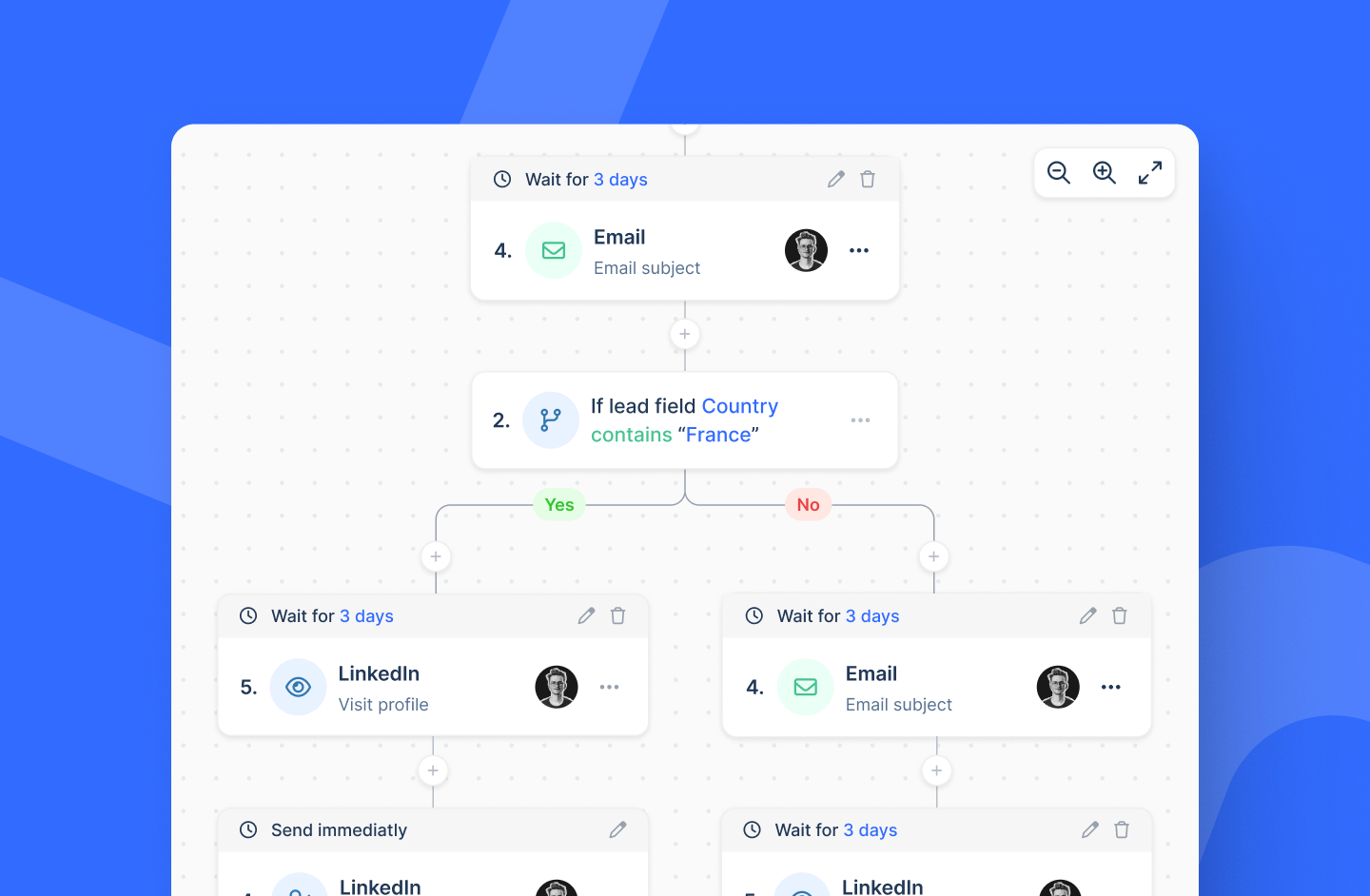
This feature’s waitlist is officially open, and there are a limited number of beta testers. Ensure you’re the first to get access and convert website visitors into buyers!
Pricing
lemlist offers 5 different pricing plans for you to choose from, including a 14-day free trial for every plan and a completely free plan.
Paid plans range form $32 to $129 per month when billed annually.
Fortunately, the database is available in all plans, and so are the advanced filters. Even the website visitor detection filter.
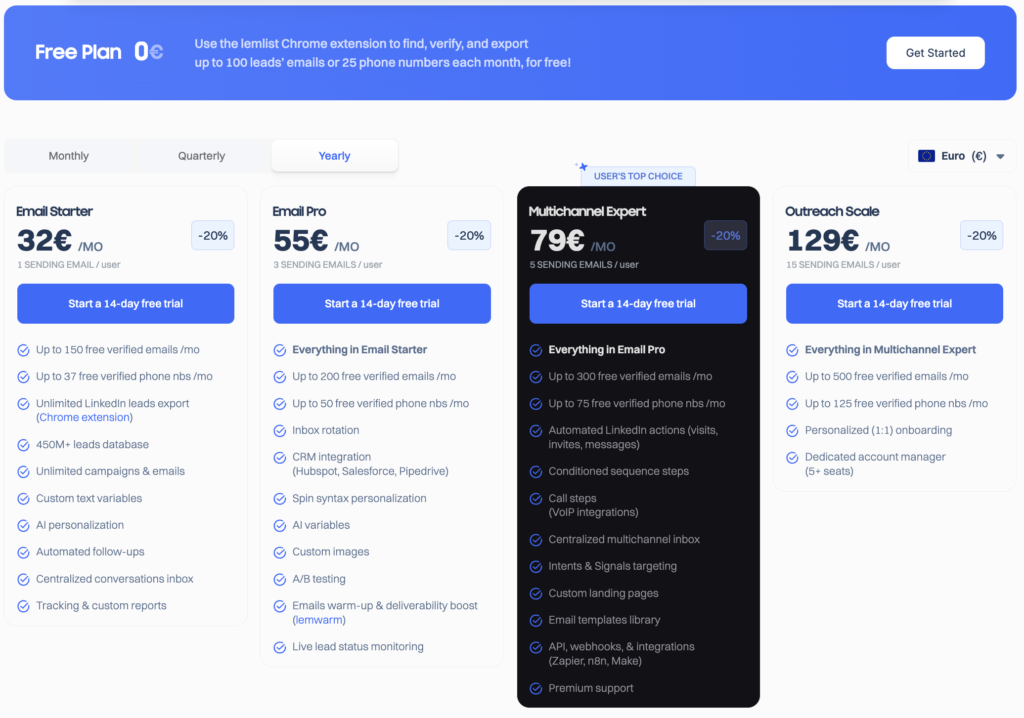
✅ Pros
- You can combine many advanced filters on the database
- The database also offers phone numbers
- Find people and companies with lemlist’s database
❌ Cons
- Limited email accounts
- Users report the interface could be improved
2. Instantly
Ratings ⭐️⭐️⭐️⭐️⭐️
G2 4.8/5 (3,433 reviews) \ Trust Pilot 4.2/5 (382 reviews)
Overview
Instantly is a sales automation and lead generation tool that offers many different features that will help you close more deals.
One of its main features is the Lead Finder, a database with 160M contacts and advances filters to help you track down your ideal customer.
Among these filters, you can select Website Visitors, and push them directly to your campaigns.
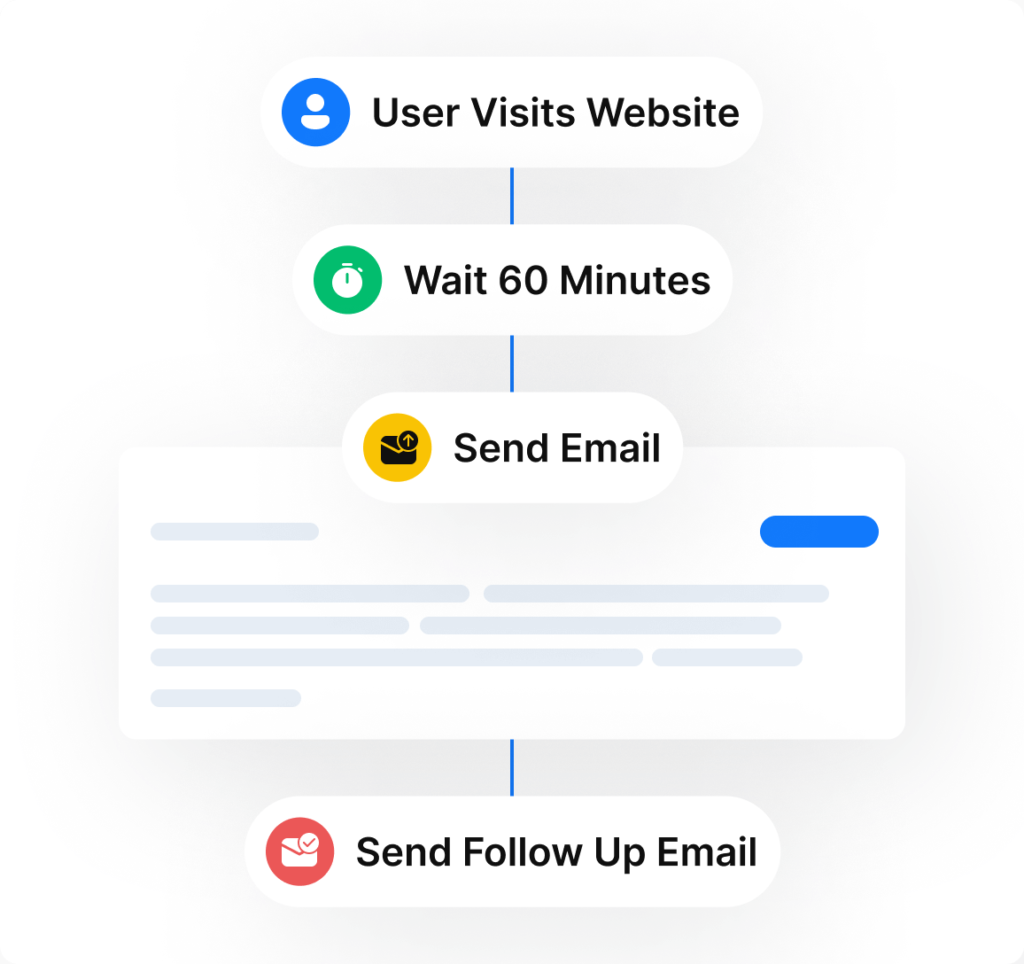
Once you’ve tracked down your website visitors, you can also push them to a Slack channel to make communication with your leads much easier.
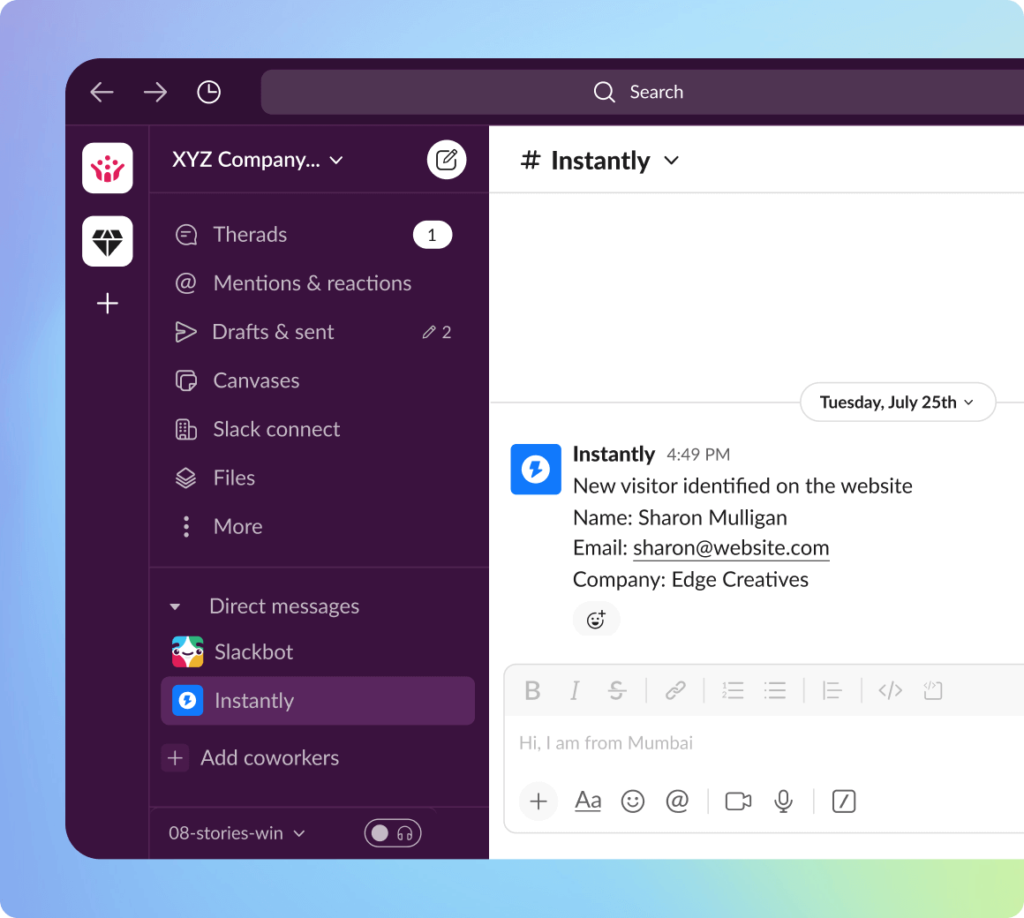
Pricing
Instantly offers a 3 product pricing model. Meaning you can select between Sendgin & Warmup, Leads, or CRM.
To access the database, you will need to purchase a Leads plan, which range from $37.90 to $169.30 per month, or a Custom plan.
All advanced filters, including website visitor tracking, are included in all Leads pricing plans.
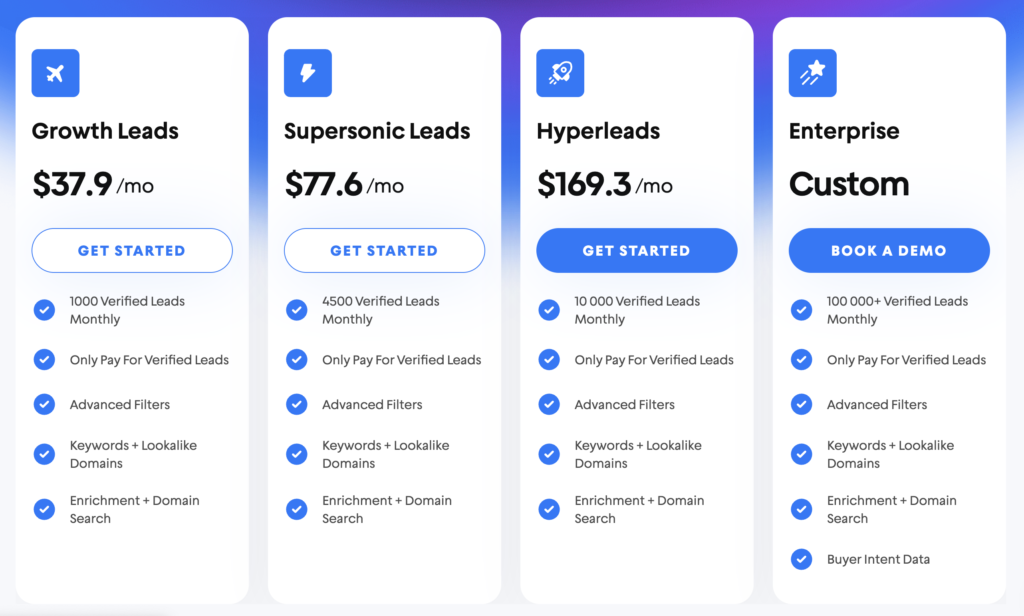
✅ Pros
- The database offers quality leads
- Simple interface
❌ Cons
- Confusing pricing plans
- Inaccurate credit usage
3. Apollo
Ratings ⭐️⭐️⭐️⭐️⭐️
G2 4.8/5 (7,854 reviews) | Capterra 4.6/5 (351 reviews)
Overview
Apollo is a sales and engagement platform for B2B sales professionals, it also offers a database with over 270M contacts and advanced filters that will help you track down your ideal customers.
Additionally, there is a Website Visitor feature which will allow you to build a list of warm leads. However, the setup requires some knowledge on HTML codes and website codebase.
Once you add the code, you can then add your website by clicking on Add Domain.
Apollo can track visitors even if they don’t fill out any forms to identify themselves, or ir can link the IP addresses to is database to identify companies.
Pricing
Apollo offers 4 pricing plans. Including a free plan which will give you access to the database but only with basic filters and you can only include 1 buying intent filter.
Pricing plans range from $49 to $119 per month, however Website Visitor Tracking is only available on plans Professional and Organization.
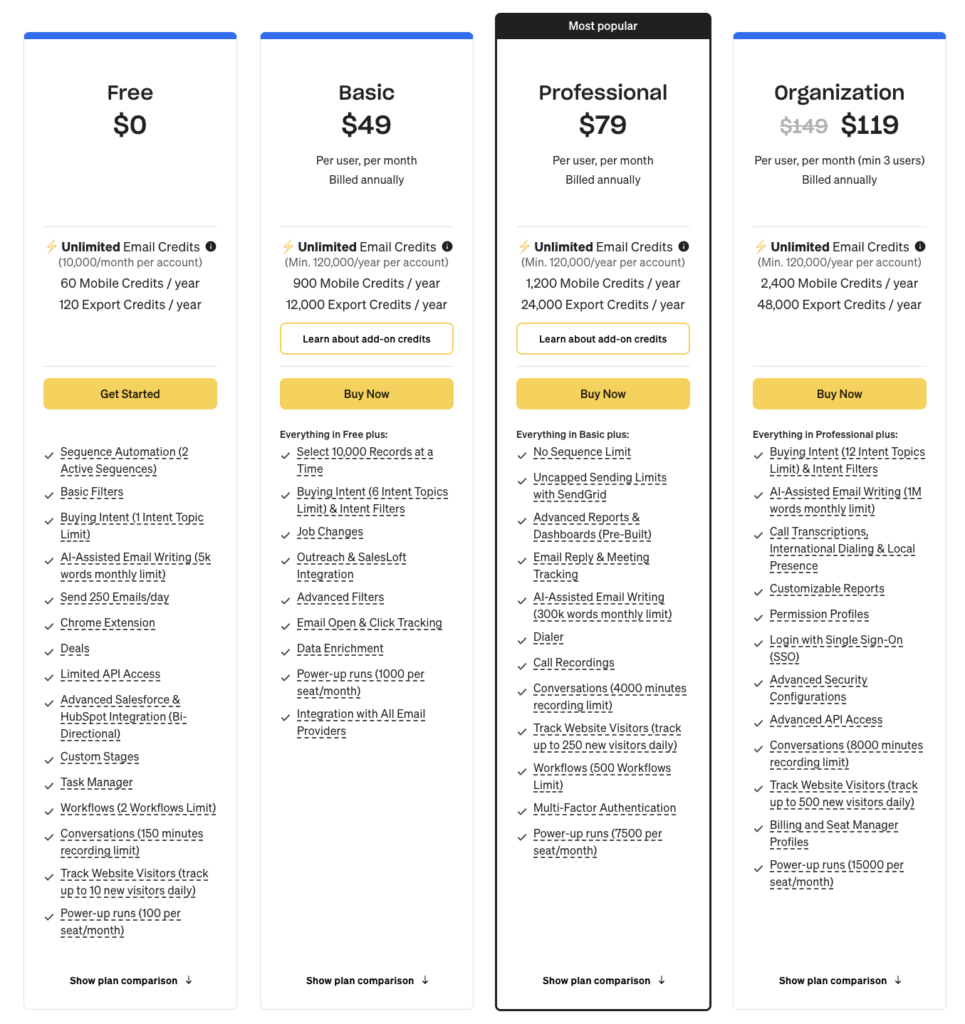
✅ Pros
- Very precise search filters
- Accurate emails and phone numbers
❌ Cons
- Requires technical knowledge
- Steep learning curve
4. Clearbit
Ratings ⭐️⭐️⭐️⭐️⭐️
G2 4.4/5 (625 reviews) | Capterra 4.5/4 (33 reviews)
Overview
Clearbit is a data enrichment and intelligence platform brought by HubSpot which offer many useful tools including Reveal, a website visitor tracking tool.
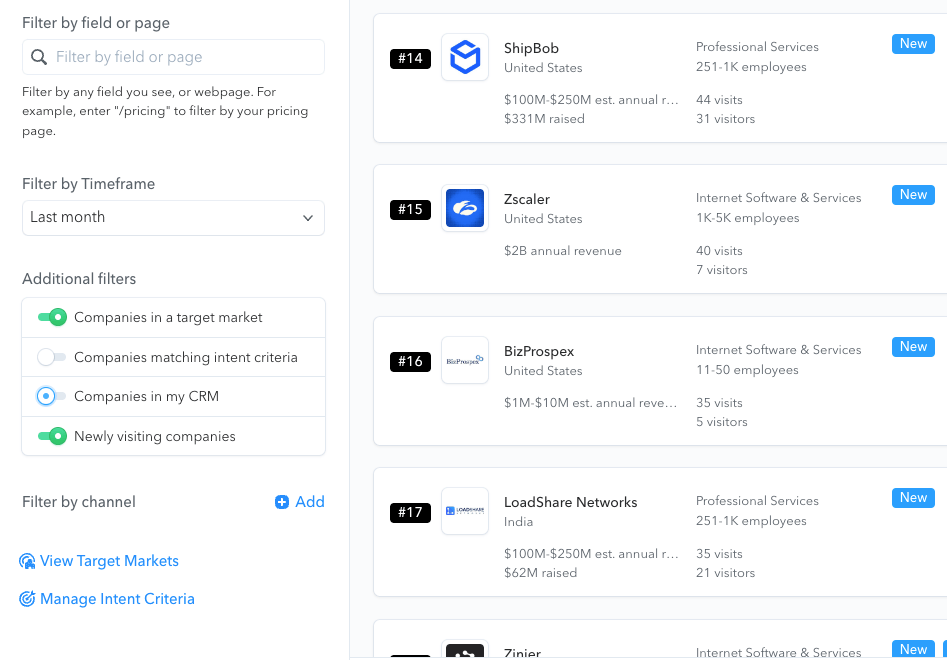
Credit: Clearbit
When someone visits your website, Reveal will track their IP address and identify the company, filling out their information with their database and, additionally, letting you know if the visitor in question is already in your CRM or not.
With Reveal, you can also receive behavioral insights, as the tool lets you know details such as which pages they visited, how much time they spent on each page, etc.
Pricing
As Clearbit is now totally integrated with HubSpot through Breeze AI, you’ll have to buy the Breeze package from HubSpot, priced at $45 per month.
✅ Pros
- Full integration with HubSpot
- High-level data enrichment
❌ Cons
- Has undergone too many changes recently
- Doesn’t work on its own
5. Mixpanel
Ratings ⭐️⭐️⭐️⭐️⭐️
G2 4.6/5 (1,140 reviews) | Capterra 4.5/5 (139 reviews)
Overview
Mixpanel is an analytics platform that offers deep insights into how users behave on your websites and apps.
With Web Analytics, Mixpanel not only identifies users, it also offers detailed behavioral analytics into any page you need.
The only downside, is that tracking is not effective with anonymous users, unless they allow cookies.
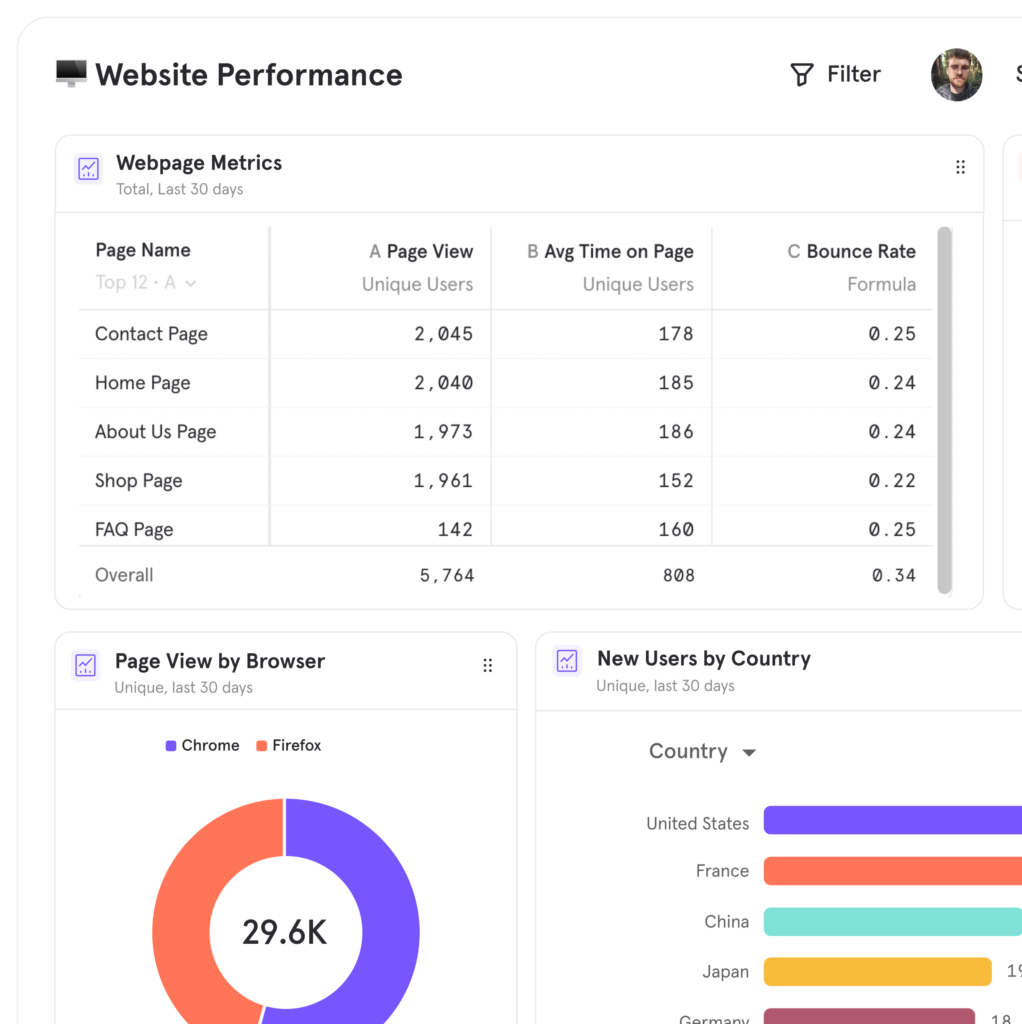
Pricing
Mixpanel offers 3 pricing plans.
Behvioral insights are available in all of them, however they are quite limited in the free plan.
You can choose the Growth plan for ($24/month) or the Enterprise plan, although Mixpanel does not disclose this plan’s pricing.
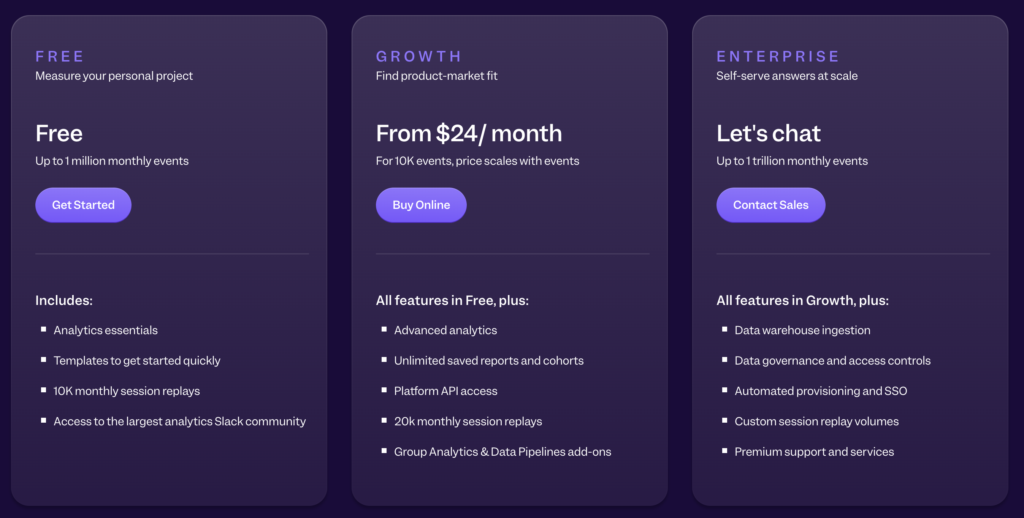
✅ Pros
- Intuitive and user-friendly analytics
- Many different advanced features
❌ Cons
- Challenging integrations
- Doesn’t identify anonymous users
Is website visitor tracking necessary?
Although you can still generate leads without it, yes, it’s necessary.
Identifying anonymous website visitors is key to landing conversions and boosting sales. It allows you to target the previously anonymous 98% of your website visitors.
These are the people who already expressed their interest in your service or product, and letting them leave your website unidentified is losing money.
Traditional website visitor tracking methods have severe limitations, are not scalable, and do just one part of the job.
lemlist new smart feature emerges as a new all-in-one solution that helps to push identified website visitors into your sales funnel, by adding them to multichannel outreach campaigns.
You can’t beat the simplicity of it.

